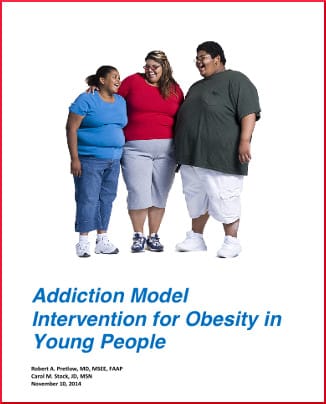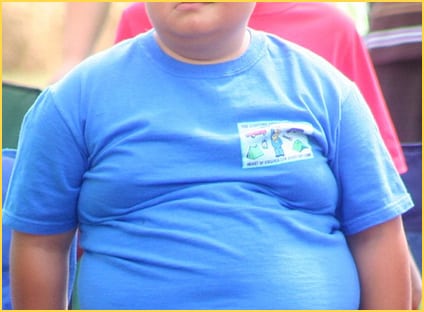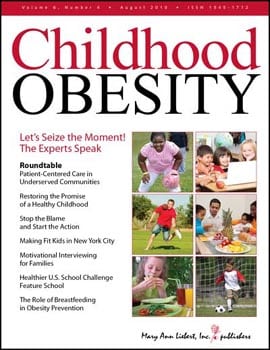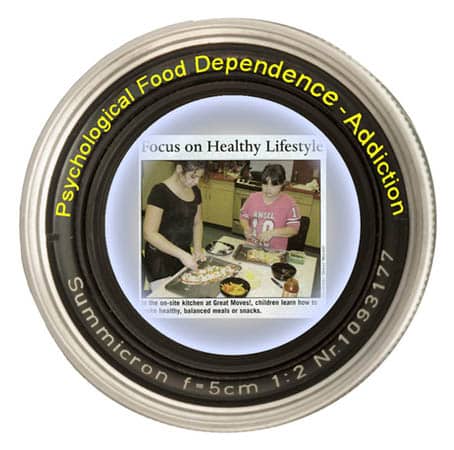Dr. Pretlow’s Advice to a British Mum
{NOTE: Yesterday Childhood Obesity News published, with the kind permission of its author, a moving communication from a mother in Great Britain, along with the beginning of Dr. Pretlow’s response. Here is the rest of that reply.}
You can’t make her accept your help, but only offer her the opportunity. It’s up to her. She really should be the one who mentions that her weight is a problem, not you. Be caring. Be her friend. Be patient. Try to find out what’s important to her, what she likes, what she’s good at, what she might like to do in life.
Educating her on the health dangers of weight gain may have no effect. Education on health effects of smoking doesn’t have much effect on kids either. Kids, particularly teenagers, tend to feel invincible. Motivations such as being able to move faster, not being teased, being able to wear cool clothes, and attracting the opposite sex, have much more effect. Try to tap into the things that are important to her in order to help motivate her. Your daughter desperately needs to see a way out of her vicious circles and the life that she’s backed herself into. She needs believable hope that there is a way out. She likely feels that food is currently her only recourse. You can help her find hope and see a way out.
Escaping the Vicious Circles of Obesity
You can help guide her to break out of the vicious circles, find other ways to get comfort and cope, and re-establish her life again. A vicious circle will cease rotating if broken at any point on the circle. The possibilities:
- Help her to reduce her emotional pain, perhaps with counseling on problem solving. Give her a journal or a tablet and see if she will write down her problems and aspirations, and what she might do about them.
- Help her to stop eating as a way to ease emotional pain, anxiety, or boredom, and to find non-food alternatives like pets, volunteering at a shelter, or activities with other teens. What activities are capable of preventing boredom and diverting her attention from the eating urge? She might take a course in drawing, pursue arts and crafts, or join a photography club or fishing club. She could fill a Distraction Jar with slips of paper containing ideas, and, when the eating urge strikes, pull one out and do it.
- Help her build self-esteem. If she could lose even a few pounds, there would be less need of food for comfort. Other self-esteem builders are to write down her strengths, what people like about her, and do something nice for someone else.
- Help her to move. Her heavy weight causes her to get out of breath easily and causes joint pain, both of which make her more sedentary, which equals more weight gain and another vicious circle. Staying sedentary burns fewer calories, and doesn’t supply muscle movement endorphins, and she snacks more. The loss of just a few pounds brings better movement, so she can get out of the house, find distractions, and break that second vicious circle. Each time your daughter is able to break a vicious circle for even just a bit, the circle will get smaller and easier to break the next time.
Helping as a Parent
As you have realized, nagging or being the food police is counterproductive for helping overweight teens and typically turns food into a power struggle. Your distress about your daughter’s weight or disapproval of her sneaking food may be felt as abandonment by her, resulting in more seeking of comfort from food. The impetus to stop sneaking food has to come from her.
Continue to be the mom who cares about your daughter’s health and her future well-being. Reassure her that you love her no matter what and that you understand why she sneaks food, that it’s a way to ease sadness, nervousness, or stress. Once you have re-established a relationship with her, please consult the booklet “Addiction Model Intervention for Obesity in Young People,” downloadable from Weigh2Rock.com as a pdf file.
Help your daughter understand that her urges to snack really are not hunger, and that she will be fine if she doesn’t snack. Suggest that when she has the urge to go and eat something that she just relax, take a deep breath, hold it for a second or two, blow it out, repeat, then distract herself. She’s likely lost her other coping skills and will need to re-kindle those skills, like writing her problems down, looking at life as an adventure, getting support from other people, etc.
At Home, Practice “Tough Love”
Help her to avoid, or immediately get away from, food cues. Avoid having any food in front of her other than at meals, especially when she might feel nervous or upset. She should distract herself if she can’t avoid food cues—go outside, read a book, send a text, call or hang out with a friend, or journal what she’s feeling and also write what she might do about it. Help her to stay away from food except at meals, and replace eating between meals with some activity that she likes, as mentioned earlier.
You must be able to endure displeasure and anger from your daughter when you stop allowing her to have treats and snacks or extra food at meals. You will need to take her through withdrawal from problem foods, snacking, and excessive food amounts. She will try to manipulate you and make you feel bad. Don’t give in. Lock up all food in your house, even canned and boxed goods. Any available food is a trigger for her to eat. As you indicated, your daughter is able to buy food herself or order food delivery to your house, yet someone still has to pay for it. Do not give your daughter any money. If she earns money herself, at least it will get her out of the house and with other people.
Food Withdrawal
Once she starts feeling better about herself, you can broach the subject of food withdrawal and that you are going to help her gradually break her eating addiction. Hopefully, this will be with her cooperation, once you are able to talk to her and explain that it is for her benefit and that you care very much about her and will help her. Food withdrawal is explained in the booklet, and is summarized below.
She must identify her problem foods, foods which she craves or cannot resist when available, and then stop eating them, one at a time, until her cravings or difficulty resisting the food have resolved (typically 10 days). Withdrawal from snacking (including binge eating) is accomplished by progressive snacking avoidance time intervals—first morning, then afternoon, next evenings, and lastly night time—with the aim of zero snacking during the entire day.
Methods to use include: distractions (e.g. going outside), avoidance of triggers (e.g. boredom, the kitchen), alternative behaviors (e.g. squeezing hands), distress tolerance (e.g. urge surfing), relaxation techniques (e.g. deep breaths), stress management (e.g. write down her worries and a plan for each), and keeping her hands busy while watching TV (e.g. draw or make crafts). Lastly, she should decrease home meal food amounts by avoiding triggers (e.g. additional food available on the table) and by weighing and recording typical serving sizes (with a digital food scale) of a maximum of 20-25 different foods frequently served at meals with progressive, incremental reductions of amounts all recorded mealtime foods.
Nearly all the kids in our three studies (of five months each) were able to totally stop eating their problem foods with no further cravings. Most (70 percent) of the kids were able to totally eliminate snacking, by simply distracting themselves and avoiding triggers such as boredom and going into the kitchen. On average, they reduced their amounts of foods eaten at meals to half of starting amounts.
If the above does not work and you can afford it, consider sending her to a residential center for obese young people, such as Insula in Berchtesgaden, Germany. It is expensive but is like a drug rehab center.
Above all, practice what you preach. Avoid, “Do as I say, not as I do.” Even if your daughter eventually undergoes bariatric surgery, she still must break her eating addiction or the procedure would not be successful.
Next: a reply from the English mum.
Source: “Addiction Model Intervention for Obesity in Young People,” Weigh2Rock.com
Image by Weigh2Rock.com










 A recent
A recent  FAQs and Media Requests:
FAQs and Media Requests: 











